Europe rejoiced when he died. Church bells tolled, and celebrations were held. In Venice, the proclamation was short but very effective. “La Grande Aquila è morta!” (The Great Eagle is dead!)
Sultan Mehmet II was 49 years old when he died in 1481. During his reign, he consolidated Asia Minor and conquered Serbia, Morea (Peloponnese peninsula in southern Greece), Wallachia (today’s Romania), Bosnia, Albania, Moldavia, the islands of Lesbos and Negroponte (Euboea). However, his greatest conquest was Constantinople, the capital of the East Roman Empire. That was when he became Fatih (Conqueror) Sultan Mehmet for the Turks and the most feared of all nightmares for his enemies. He was only 21 years old then. Constantinople (Istanbul) was his childhood dream…
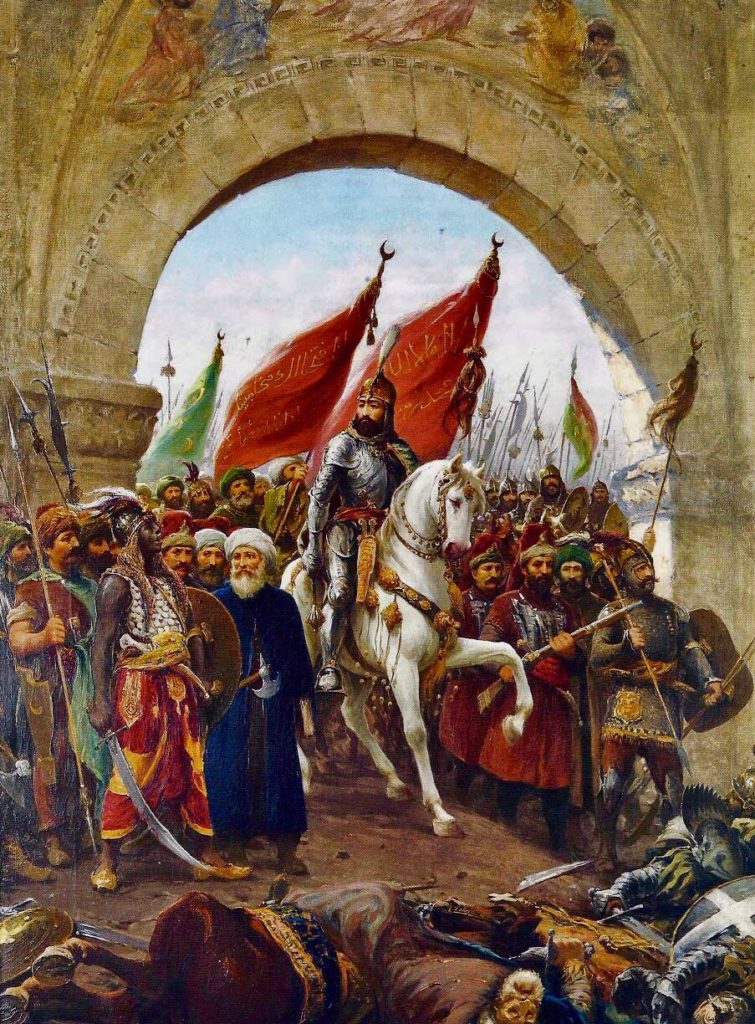
Painted in 1903 by the Italian painter Fausto Zonaro (1854-1929).
(National Palaces Painting Museum, Istanbul)
The painter also depicted himself in this painting, standing at the front, on the left hand side of the Sultan. Zonaro lived in Istanbul and was the Ottoman Imperial court painter under Sultan Abdülhamit II between 1892-1909. He left Istanbul in 1910.
Historical individuals are attributed with qualities in time that differ according to the stance of the observer. They may be considered as God chosen, even divine, or just bloodthirsty villains depending on whether they are evaluated by the conquerors or the conquered. It all depends on which side you stand. Yet, they are also human beings whose personal qualities are often overlooked by both parties. Sultan Mehmet II is no doubt one of those historical figures.
It is true that, the conquest of Constantinople by the Turks, and consequently the final collapse of the East Roman Empire, in 1453 was a great shock for Europe. It can also be claimed that the repercussions of this trauma can still be traced in the relations of modern Turkey with some countries and Europe as a whole. It is evident that this was not a simple military campaign that went well for the attackers. It was a victory that changed the course of history dramatically while bringing an end to the Middle Ages. This alone can be regarded as a good reason for a close-up look at the young Sultan of the time, Mehmet II. Who was he as a person? What was his background and what were his interests? Why was Constantinople important for him?
Mehmet the Second was born in 1432, in Edirne (Hadrianopolis), the capital of the Ottomans at the time. (Some sources claim that he was born in 1430.) Today, this city is close to Turkey’s borders with Greece and Bulgaria. The Ottomans set foot on the European continent almost 100 years before the fall of Constantinople. With the conquests in Eastern Europe and Thrace, the capital city of the East Romans was already like an island surrounded by the enemy. It is known that Mehmet’s mother was of Greek origin. As was the tradition, she converted to Islam upon entering the Harem of Mehmet’s father, Sultan Murat II. (For more detailed information about the Ottoman Imperial Harem, you can read the post “Beyond the High Walls of the Harem…”).
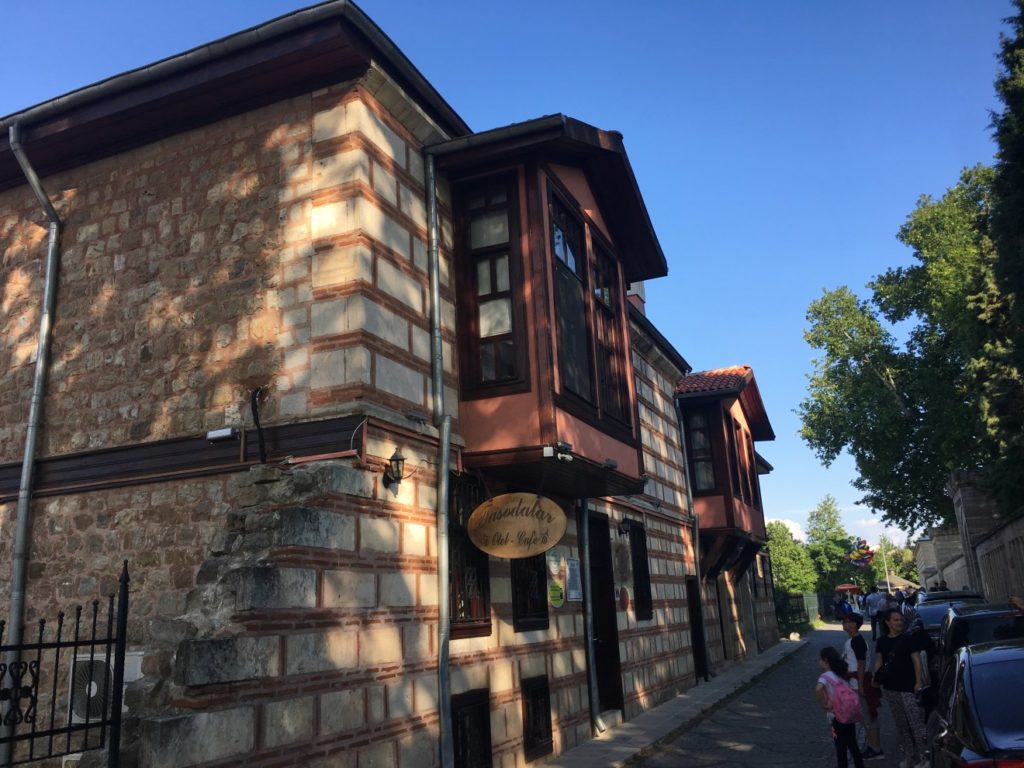
As a Prince (Şehzade), Mehmet II was initially third in line as heir to the throne but, he received a very good education from early on. His tutor was the renowned scholar Akşemseddin who taught him the basics of both Eastern and Western science and philosophy. Mehmet II’s Euclidean geometry book can be seen in the Military Museum in Istanbul. His personal copy of The Iliad and The Odyssey in Greek is currently in the library of the Topkapı Palace. Istanbulites were able to see it within the scope of a special exhibition a few decades ago. It is known that he was fluent in Greek, Italian, Arabic and Farsi. He also had some knowledge of Latin. He used translators on important occasions with foreigners but that was only as a requirement of diplomatic decorum at the time, giving him time to think over his reply and also to observe the body language of the other party.
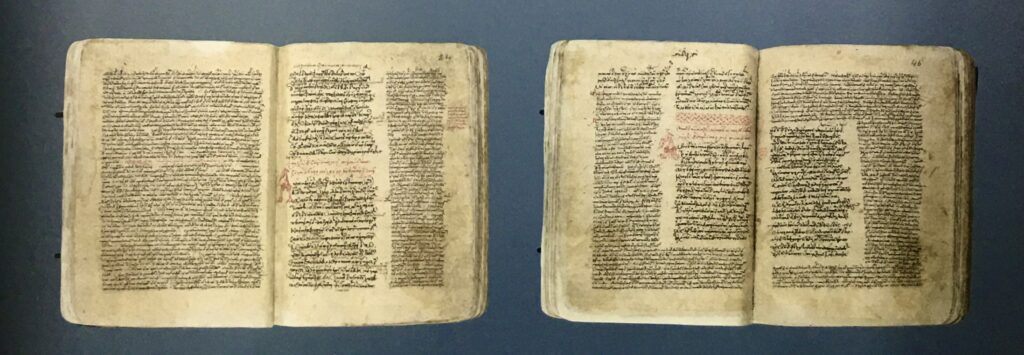
Topkapı Museum, Fatih Library.
Mehmet II became the heir apparent when both of his elder brothers died, one after the other. He ascended the throne the first time at the age of 14 when his father, Sultan Murat II, decided to abdicate the throne to spend his time in leisure. The young Sultan was inexperienced, and times were hard with an imminent threat of a Hungarian attack and the revolts of the janissaries. His words ordering his father back to take command have been famous ever since…
“If you are the Sultan, come and lead your armies. If I am the Sultan I hereby order you to come and lead my armies.”
Upon receiving this letter, Murad II led the Ottoman army and won the Battle of Varna (in today’s Bulgaria) in 1444.
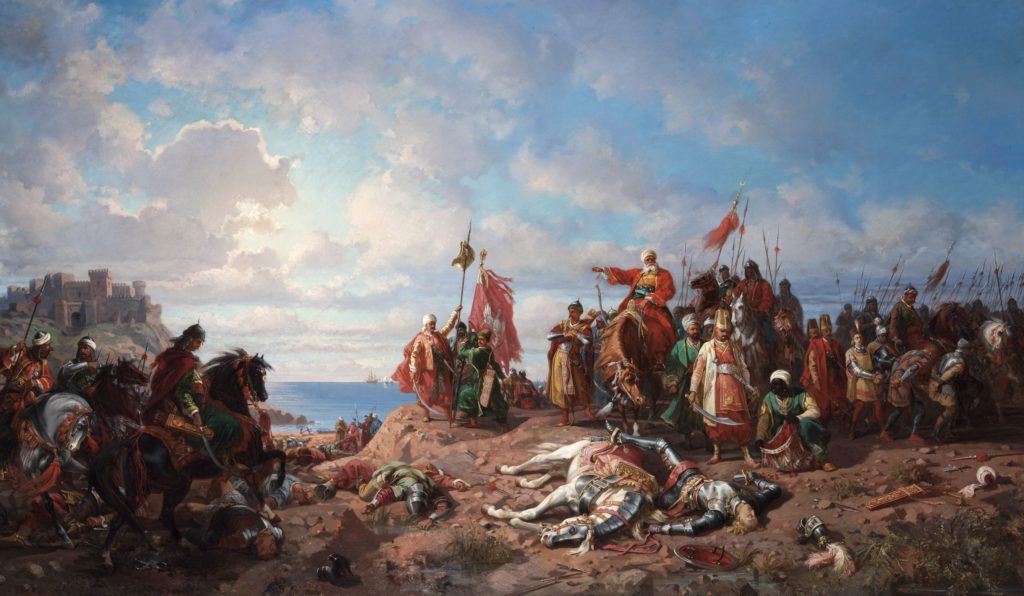
Painted between 1865-1875 by the Polish painter Stanislaw Chlebowski (1835-1884).
(National Museum in Cracow)
Stanislaw Chlebowski was the Ottoman Imperial court painter for Sultan Abdülaziz between (1864-1876)
In 1446, Mehmet II handed over the throne to his father only to resume it again at the age of 19, in 1451, when his father died. His second rule was to last for 30 years, making him the greatest of the Ottoman Sultans.
Sultan Mehmet II was a Renaissance intellectual with special interest in the Western civilisation, culture, art and way of thinking. Like most Ottoman Sultans, he was also a poet, writing with the pseudonym Avni. He studied Greek philosophy, history and read books on Byzantine art and architecture. He was an admirer of the Basilica of Hagia Sophia long before the conquest and did not hide his excitement when he entered this marvel of architecture for the first time. After entering the city in the late afternoon of the day of the conquest, May 29th, 1453, he rode slowly on his white horse through the streets of the city until he reached Hagia Sophia. He dismounted at the door of the basilica, bent down to take a handful of earth from the ground and sprinkled it over his turban as an act of humility before God. He expressed his admiration for the architecture, the mosaics and the artefacts. Afterwards, he and the Muslim congregation together with him stood in prayer here for the first time. Sultan Mehmet the Conqueror had Hagia Sophia thoroughly repaired but never changed its name. It remained as the Holy Wisdom even though it was turned into a mosque.
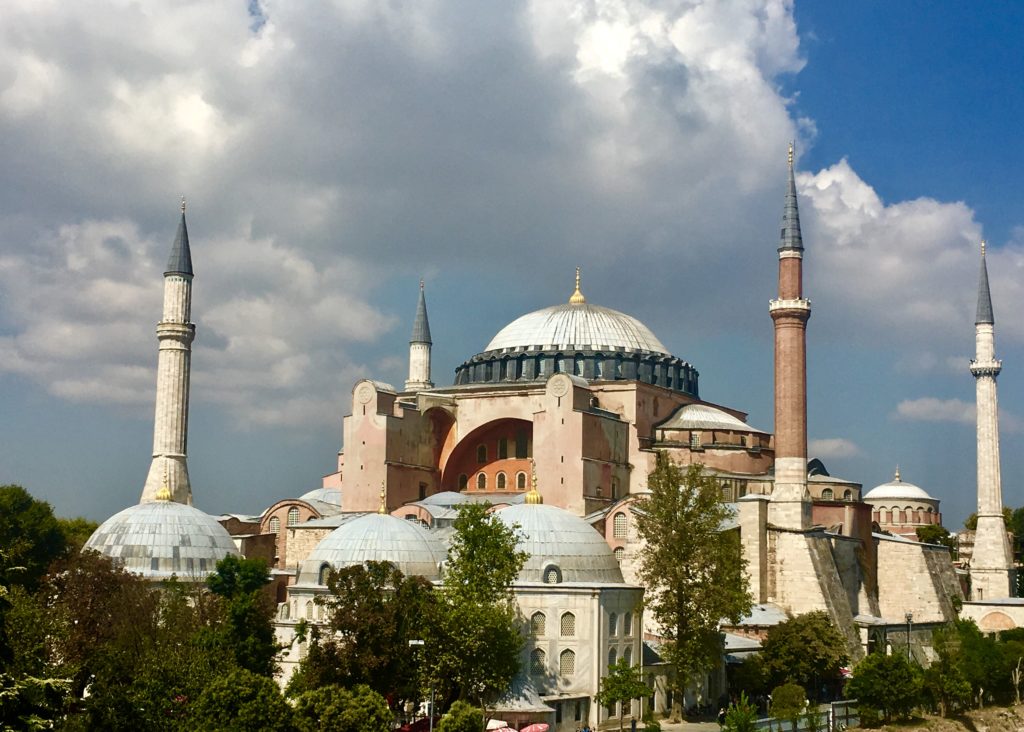
From early on, his aim was to conquer Constantinople, the East Roman Empire and finally Rome. He thought of the Ottoman Empire as a continuation of the Roman Empire. Judging from his and some of the following Sultans’ Legal Codices and the administration structure of the empire, some historians also concur with this continuation. The Sultan also supported his claim with blood lineage to the Byzantine Imperial family due to the fact that, one of his ancestors, Sultan Orhan I, had married a Byzantine princess. Even at his time, there were some who encouraged this point of view. Among these was the famous Greek scholar George Trapezuntios. He was a Cretan whose family had moved there from Trebizond (Trabzon). At the time, he was in Rome working on the translation of Ptolemy’s famous work on astronomy, Almagest, from Greek to Latin. Sultan Mehmet was also interested in this great work. Trapezuntios came to Istanbul in November 1465 and stayed with the Sultan until mid-March 1466. Upon his return to Rome, in his letter to Sultan Mehmet the Conqueror he wrote:
“Let no one doubt you are by right the emperor of the Romans. For he is the emperor who by right possesses the seat of the empire, but the seat of the Roman Empire is in Constantinople: thus, he who by right possesses this city is the emperor. But it is not from men but from God that you, thanks to your sword, have received this throne. Consequently, you are the legitimate emperor of the Romans… And he who is and remains emperor of the Romans is also emperor of the entire earth.”
Venetians, who preferred to side with the Ottomans instead of the Pope and the other European States, also murmured similar praises into the Sultan’s ears. However, Mehmet II was never to attain this ultimate ambition of his even though, in 1480, his forces were able to attack and stay in Otranto (868 Km. from Rome), in South Italy, for almost a year. By that time, the Sultan was too old for such a campaign. The Pope managed to gather an army to fight the infidels but there was no need. The forces of Gedik Ahmet Pasha retreated of their own accord when the “Grand Turk” died…
Following the conquest, the Ottomans and Venetians clashed with each other on several fronts. Constantinople had always been an important and strategic location for Venice’s mercantile activities which stretched from the Far East to Europe. Initially, they had enjoyed special privileges in the Byzantine capital but later, in 1171, they were driven out by the Byzantine Emperor due to the increasing pressure from the local merchants. In the meantime, around 60.000 Catholics were massacred or sent away from the city because of the discrepancies between the Byzantine and the Catholic Churches. Venetians avenged their losses during the Fourth Holy Crusade when the Latin forces headed by the Venetian Dodge Dandolo invaded Constantinople in 1204. The city was totally ransacked by the Crusaders during their stay until 1261 and most of its valuable artefacts and treasures were taken to Venice. The pillage was so severe that, some parts of Constantinople were still in ruins when the Ottomans conquered the city almost 200 years later. Some of these trophies can be seen today at the San Marco Museum in Venice. The beautiful four horses, known as the Quadriga, that once decorated the Hippodrome of Constantinople are also inside the San Marco Cathedral in Venice now. The big bronze door taken from Hagia Sophia, the Golden Altar, the marbles on the outer walls and some of the carvings are other looted items from Constantinople that decorate San Marco.
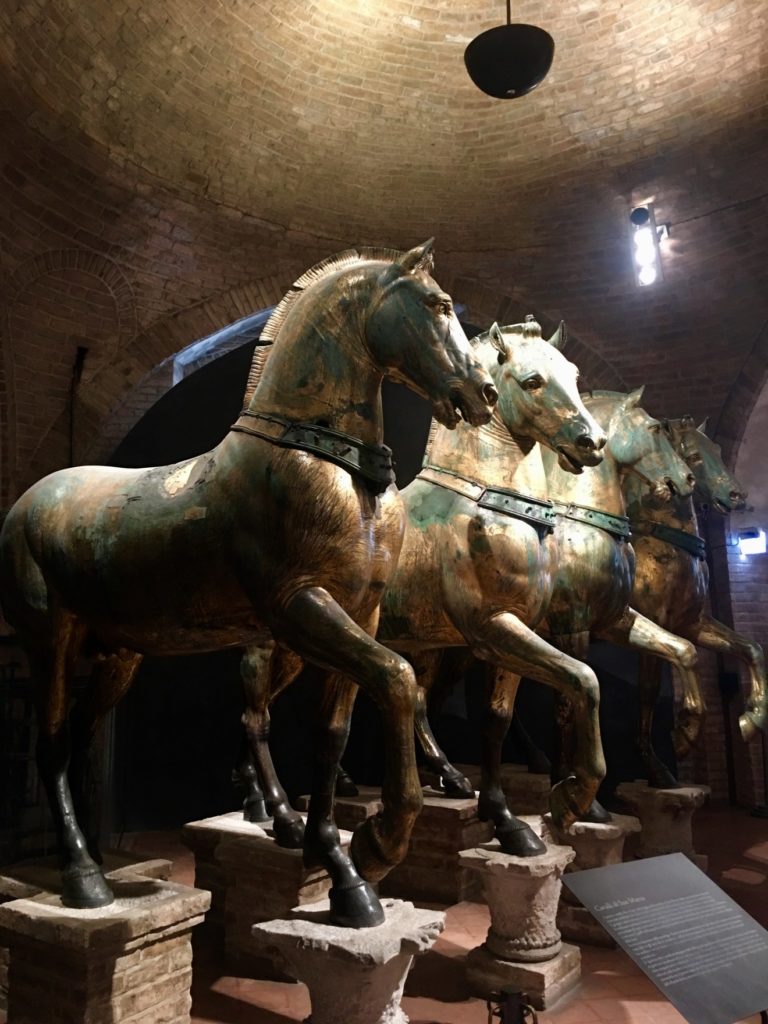
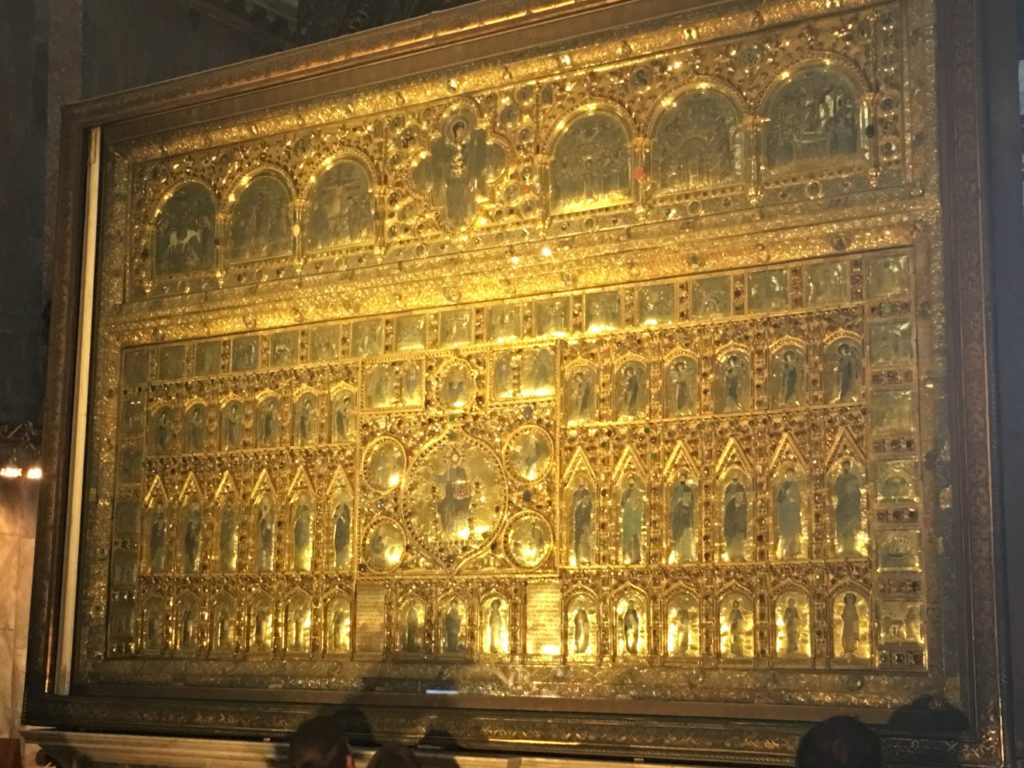
brought from Constantinople in the 13th century
Knowing that they were outnumbered by the Ottomans, the Venetians were relieved when Sultan Mehmet II suggested peace in 1479 which they quickly accepted. In addition to the usual issues of treasures and territories, the treaty included a very interesting condition on the part of the Sultan. He was asking the Venetian Senate to send a painter to the Ottoman court. This was very unusual because, Islam prohibited or discouraged the representation of living beings, especially humans, in art. The Venetian Senate was quick to choose one of the most famous artists of the time. Gentile Bellini (1429-1507).
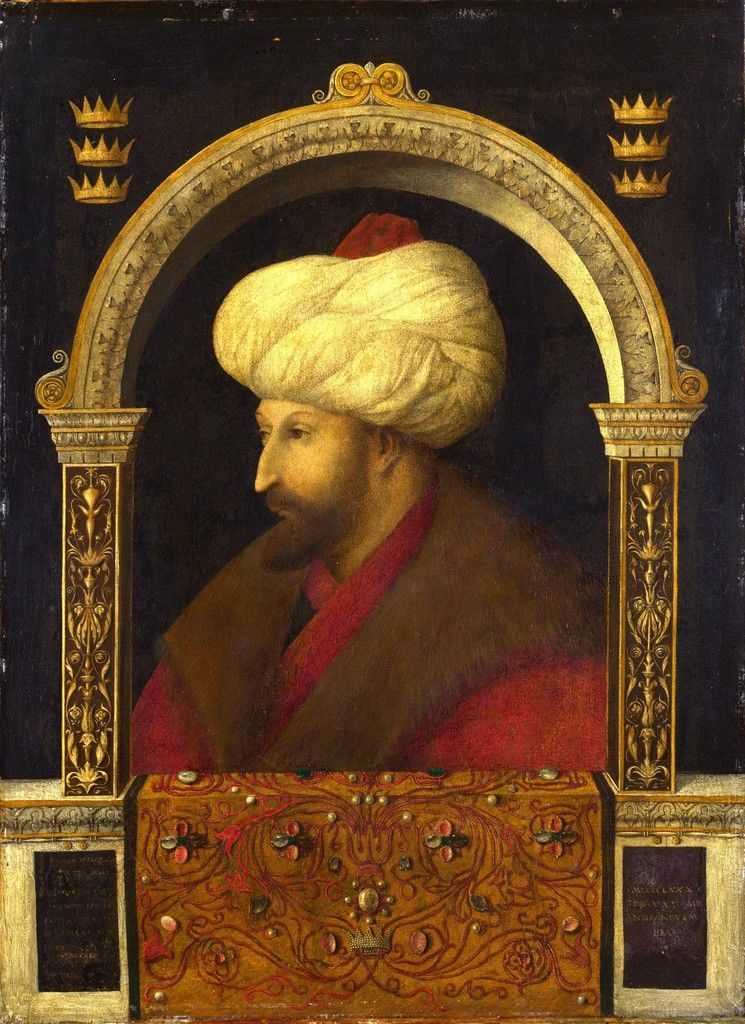
National Gallery, London
Gentile and his younger brother Giovanni were busy decorating the Dodge’s Palace in Venice at the time. However, nothing could be more important than such an artistic opportunity that also had a very important diplomatic aspect as well. Gentile set out for Istanbul to stay there for two years. He not only painted the Sultan’s famous portrait (1480) and numerous other paintings but, decorated the walls of his palace with frescoes. Unfortunately, unlike his father, Mehmet II’s son, Sultan Bayezid II, was a very pious man. All of Gentile Bellini’s paintings were sold and the frescoes destroyed when he ascended the throne after his fathers death. Luckily, the renowned portrait eventually found its way to the National Gallery in London. As for Gentile, his years with the Sultan and experience in the Orient had a lasting influence on his art in the years to come.
Speculations on Sultan Mehmet the Conqueror’s faith never ceased. During his lifetime, they were about whether he would ever convert to Christianity. After his death, the conjectures were on the possibility of his secretly having done so. This was partly because his mother was originally a Christian. Another reason was his curiosity about Christianity even though in reality this was an intellectual endeavour for him. The Venetian merchants who travelled home were always talking about how the young Sultan read the Gospels and had secretly denounced Islam. It was true that, after appointing Gennadius Scholarius as Patriarch in Istanbul and giving him rights of property, the Sultan asked him to translate the Bible into Turkish. In return, Gennadius recognized him as successor to the throne of the East Roman Empire.
According to the German historian Franz Babinger, Pope Pius II was possibly influenced by all these rumours which led him to write a letter to the Sultan in 1461, inviting him to convert to Christianity. The letter, now said to be in the Vatican archive, was never sent but was published several times as part of the letters of Pope Pius II, during the Sultan’s lifetime. The solution that the Pope offered to the Conqueror was simple:
“An insignificant trifle can make you the greatest, the most powerful, the most famous of living mortals. You ask what it is? It is not hard to find; there is no need to go far in search of it. It can be found everywhere: a little water with which to be baptized, to be converted to Christianity, and to accept the faith of the Gospel.
Once you have done this there will be no prince on the whole earth to outdo you in fame or equal you in power. We shall appoint you the emperor of the Greeks and the Orient… All Christians will honour you and make you the arbiter of their quarrels… Many will submit to you voluntarily, appear before your judgement seat, and pay taxes to you. It will be given to you to quell tyrants, to support the good and combat the wicked. And the Roman Church will not oppose you… The first spiritual chair [the Pope] will embrace you in the same love as other kings, and all the more so accordingly as your position is higher. Under these conditions you can easily, without war or bloodshed, acquire many kingdoms…
We [the Papacy] shall never lend aid to your enemies, but on the contrary call on your arm against those who sometimes usurp the rights of the Roman Church and raise their horns against their own mother“.
Numerous historians, including H. G. Wells, have pondered over how the course of history might have changed had Sultan Mehmet the Conqueror and the Turks converted to Christianity. Be it as it may as an intellectual exercise, the reality is that no such thing happened. In fact, the Sultan had a vast mosque complex built in his name as if to give a political message to all these rumours and speculations…
Sultan Mehmet the Conqueror commissioned many important monuments in the process of rehabilitating Constantinople. The Grand Bazaar, the Old Palace (where currently there is the Istanbul University), the Topkapı Palace, the Tiled Pavilion are a few of them, not to mention the numerous Turkish Baths, mosques and waterways. Among these, the Fatih (Conqueror) Mosque Complex is no doubt the one he wanted most to leave as a legacy to the succeeding generations of his realm for, it would not be just a temple of worship but, with its 8 medreses (schools for higher education), would also serve as a cradle of science.
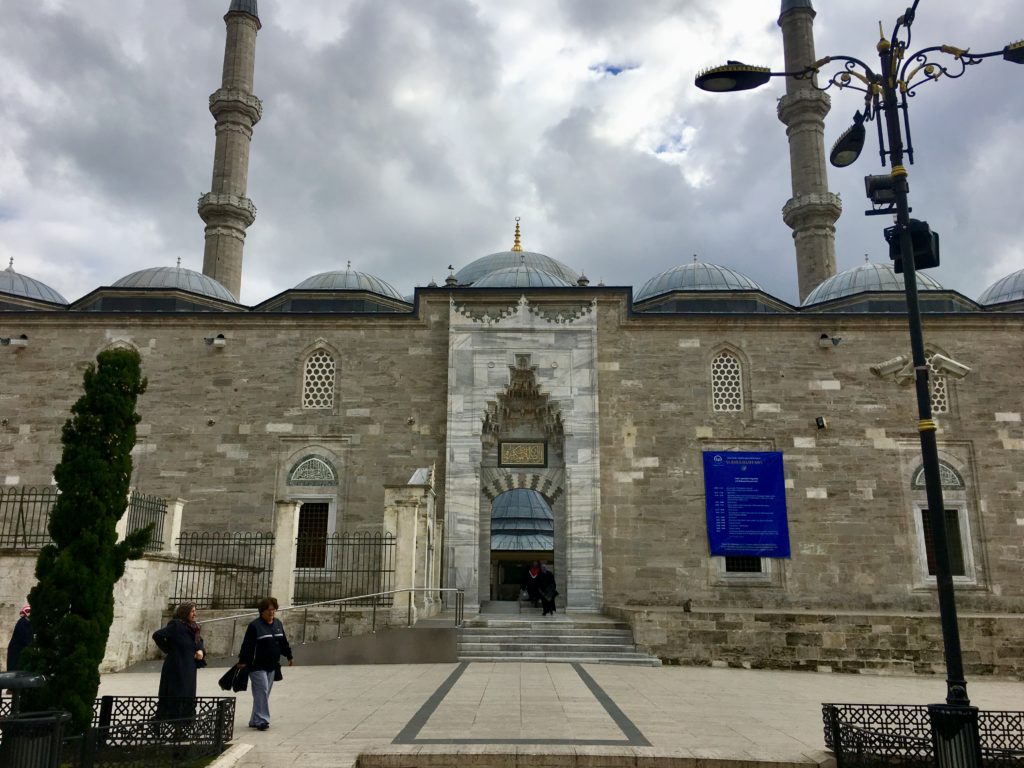
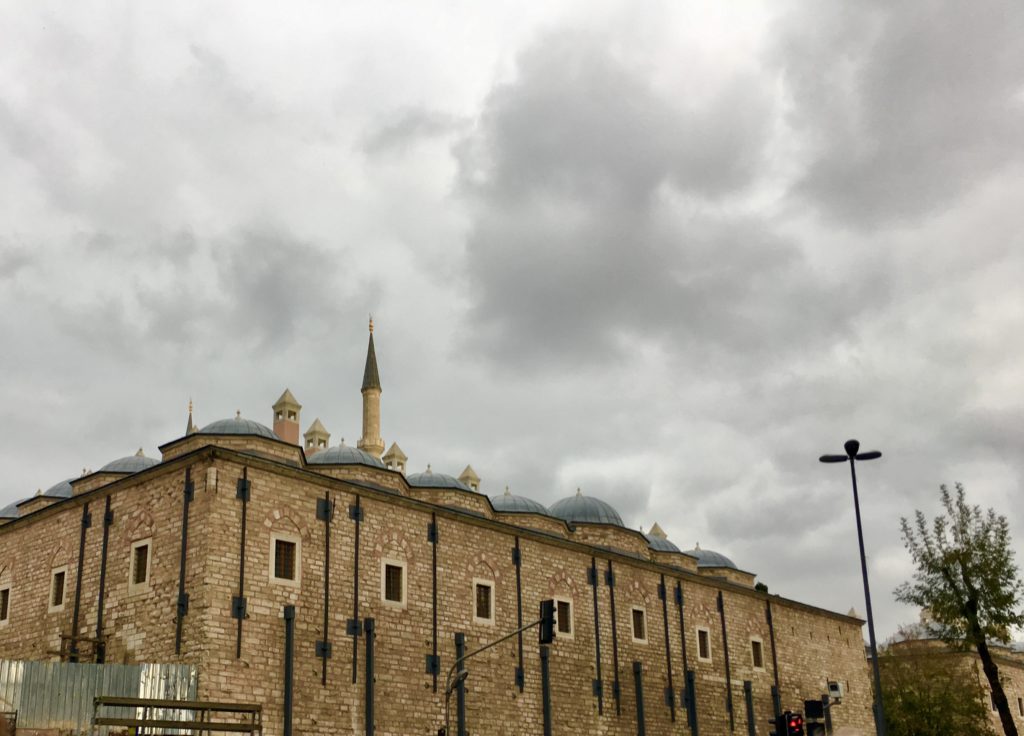
Built between 1463-1470
By the time of Mehmet II, commissioning mosque complexes in their name had already become a tradition among Ottoman Sultans. Their wives, mothers and members of the upper class would also have mosques, baths and fountains built throughout the country as an act of philanthropy. However, none of them would be as grand as those of the Sultans. The greater a Sultan you were, the more grandiose the complex would be. If the Fatih Complex is an initial example for these complexes, another one would be the one belonging to the son of his grandson, Sultan Süleyman the Magnificent. Unfortunately, the majority of tourists visiting Istanbul rarely get to see them, mostly because they are not informed about the beauty and importance of these monuments.
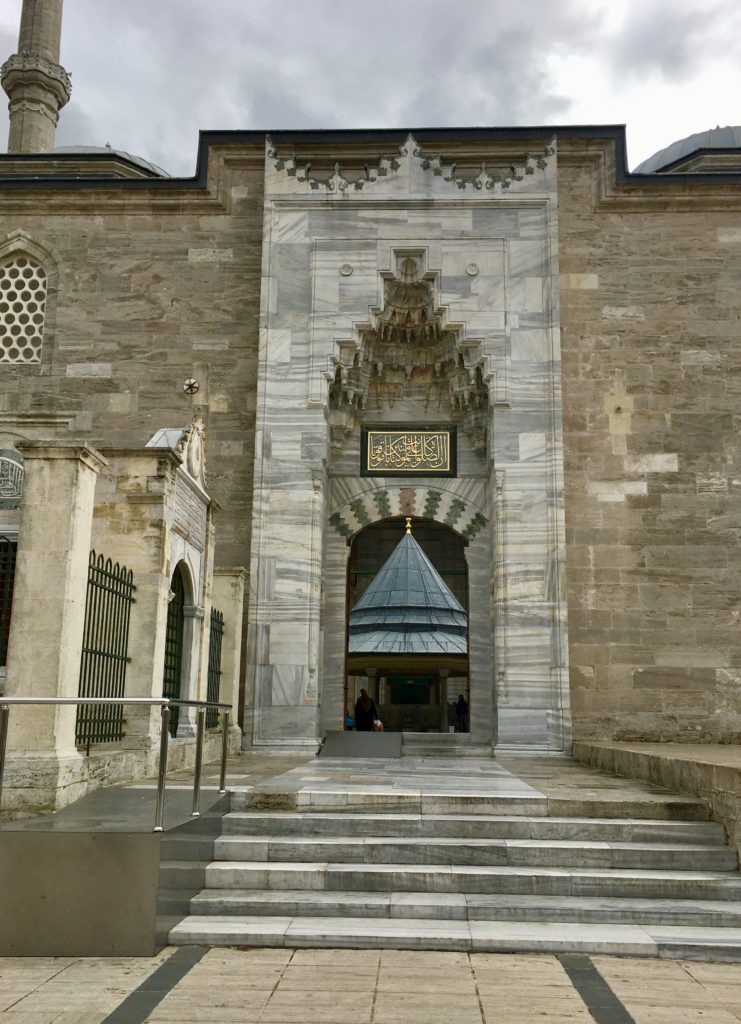
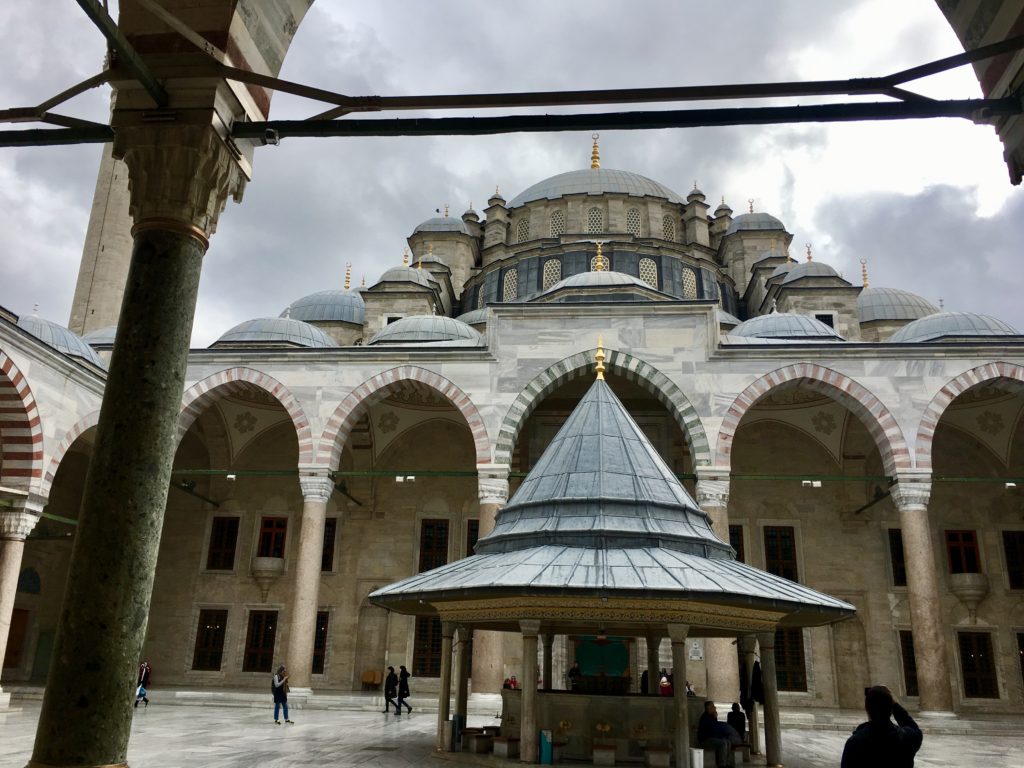
Having conquered Istanbul, it was not surprising that Sultan Mehmet II would want to have a mosque complex built in his name. However, its location imposed a political message that was very meaningful. It could not have been chosen by chance. This was the place where the Church of the Holy Apostles once stood.
The practice of building churches or mosques over pagan temples or even each other was not unusual. In fact, there were some cases where this happened several times. For example, a Byzantine church was built within the premises of the Parthenon in Athens where it served the public for almost 1000 years. The church was turned into a mosque in 1458 when Sultan Mehmet II conquered Athens. Following the Greek Independence, it was once again turned into a church.
The Church of the Holy Apostles was not an ordinary church. In its time, it was one of the most important churches of the Christian world. Built by Emperor Constantine the Great in the year 330, it was the burial place of the Byzantine Emperors and Patriarchs from the 4th to the 11th century. Initially, it had a large tomb where Constantine was later buried in 337 in addition to 12 reliquaries in which he planned to place relics from the 12 Apostles. The relics of St. Andrew, Luke and Timothy were placed there by Constantine’s son, Constantius.
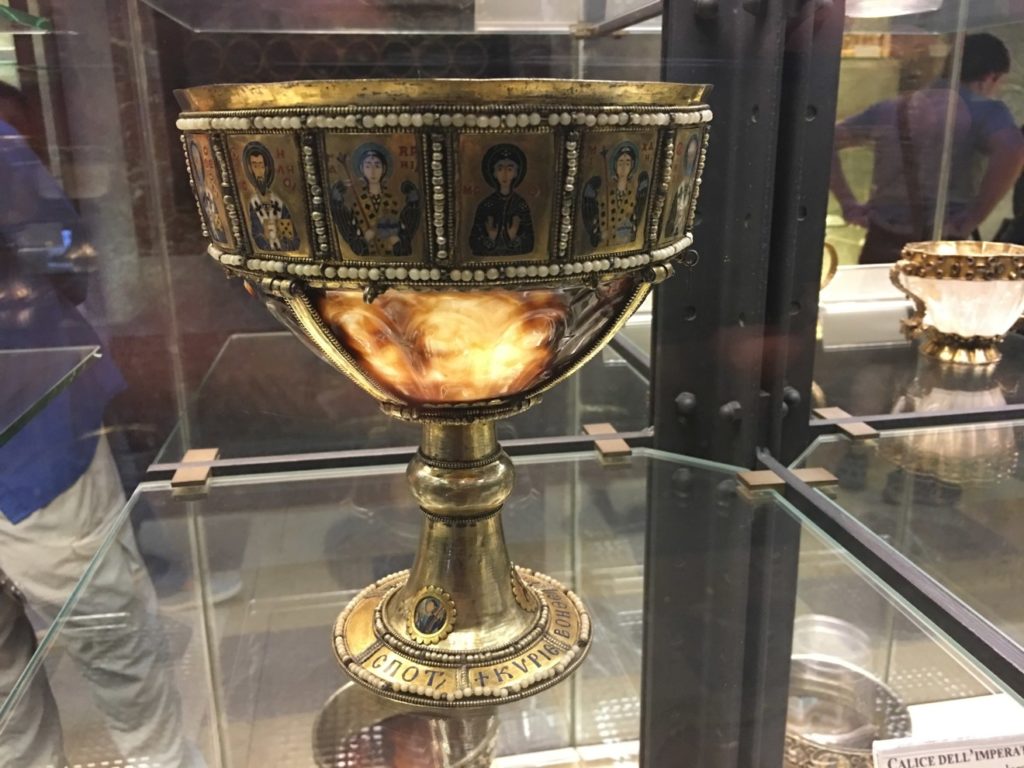
San Marco Museum, Venice
The greatest calamity that befell on the church was when the Latin army of the Fourth Crusade ransacked Constantinople between 1204-1261. The church and the imperial and patriarchal tombs were plundered, the gold and silver cups decorated with precious stones, the crowns, icons, vestments and most of the relics were taken to Western Europe. Today, many of these treasures and relics are part of the collection of the museum of the San Marco Basilica in Venice. Others are in various museums throughout Europe. Attempts to restore the church by the following emperors came to a final end after the great earthquake in 1328. So, when Constantinople was conquered by the Turks, the church was already in a dismal state.
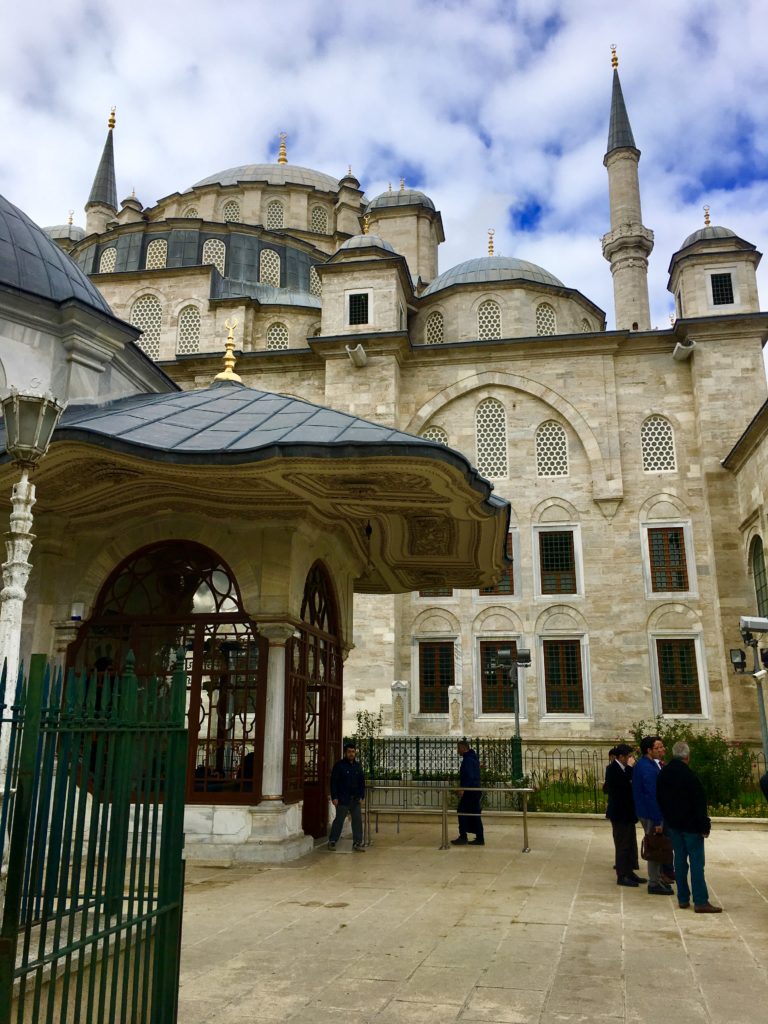
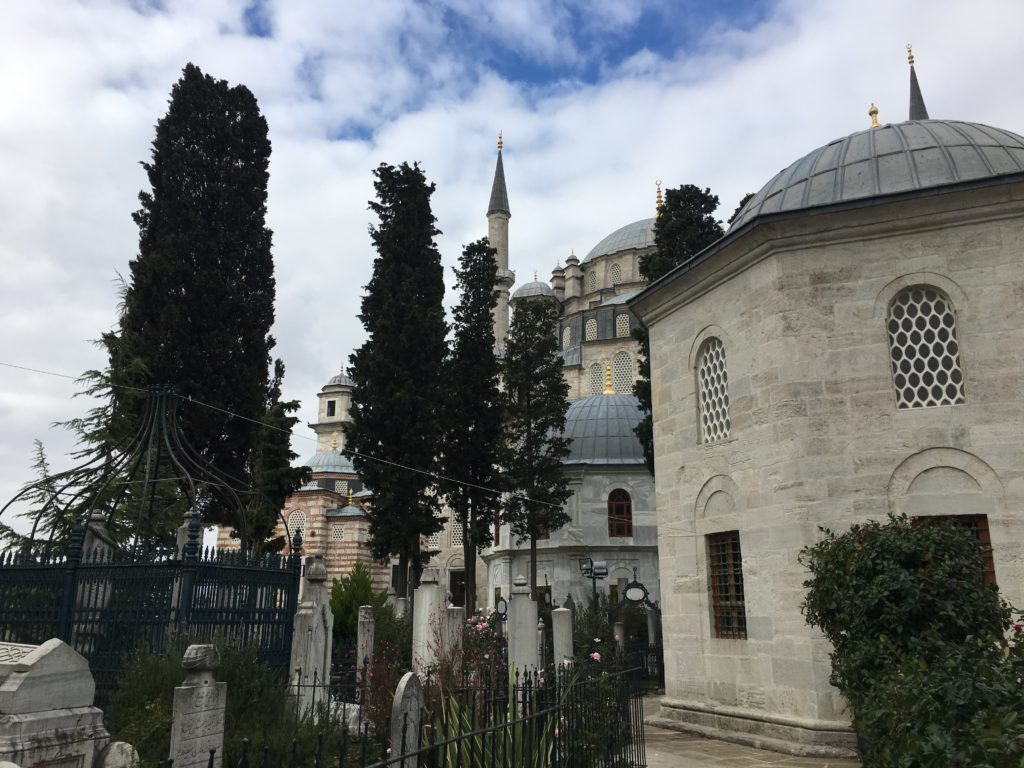
Shortly after Constantinople fell, Mehmet the Conqueror allocated the Church of the Holy Apostles to Patriarch Gennadios as the seat of the Orthodox Patriarchate. But, the Patriarchate was soon transferred because of the condition it was in and because it was in a district where not many Christians lived anymore. When, in 1461, Mehmet II decided to commission a mosque complex in his name, he had the church demolished. Since he now considered himself as the East Roman Emperor, what could be a better site for his mosque than the burial church of the East Roman Emperors. With the tombs of those emperors still in the foundations of the Fatih Mosque, he was also to be buried there, in his special mausoleum…
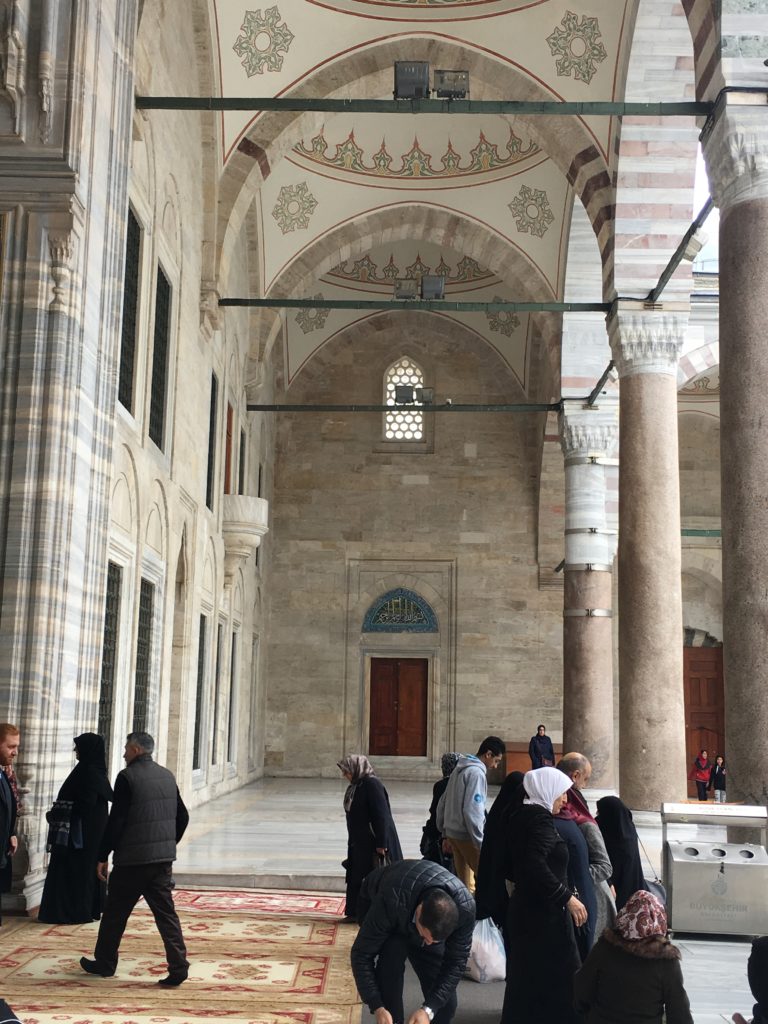
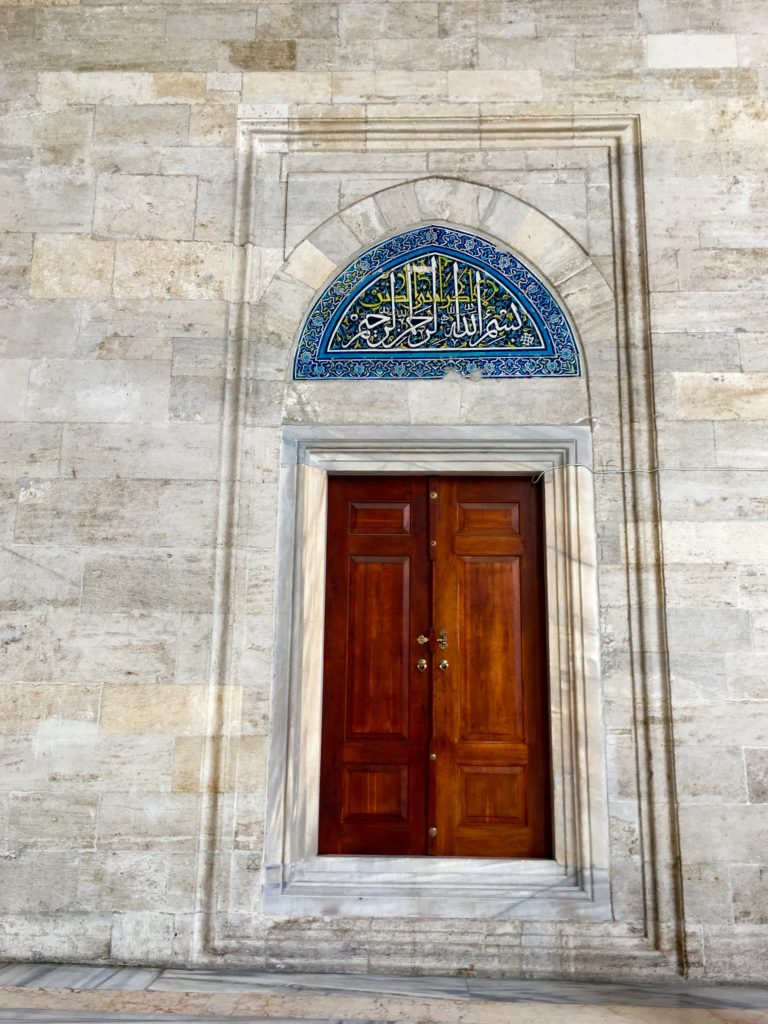
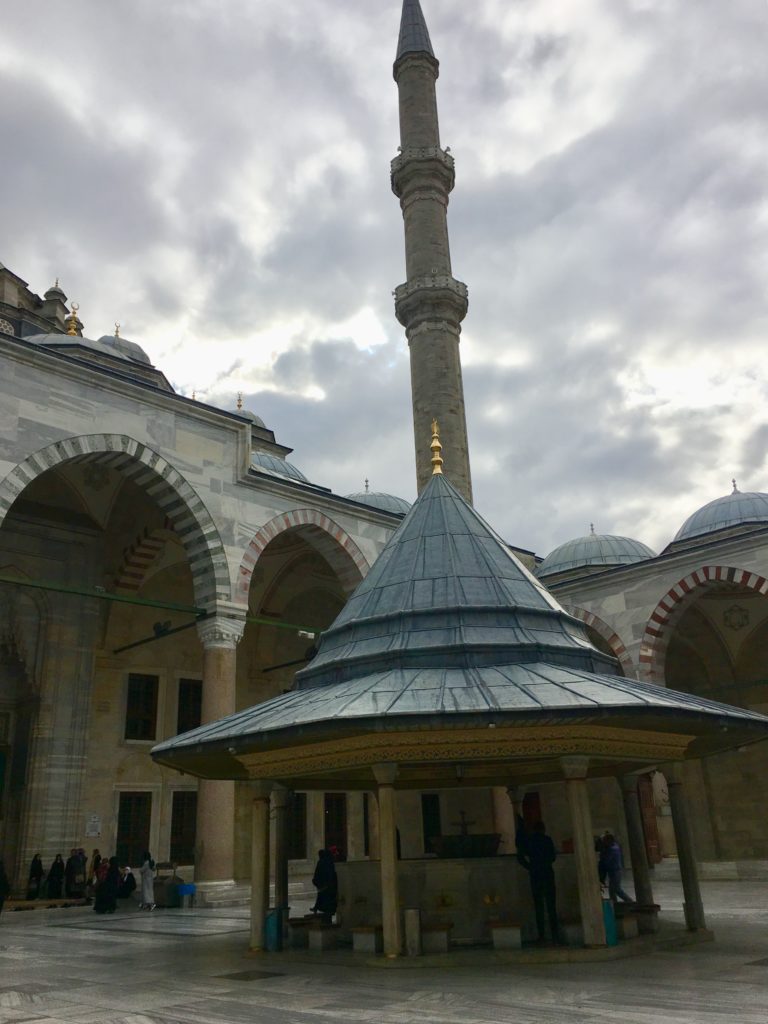
are remains of the original mosque
The complex of the Fatih Mosque stretched over a vast area (approximately 325 metres on each side). Apart from the mosque, the courtyard and the graveyard with the mausoleums of Mehmet the Conqueror and one of his wives (Gülbahar Sultan), there were 8 medreses, a tabhane (hospice), a big imaret (public kitchen for the poor), a hospital, a kervansaray (caravanserai), a primary school, a library and a Turkish bath. Unfortunately, some of these (e.g. the caravanserai, the public kitchen and the hospital) do not exist anymore.
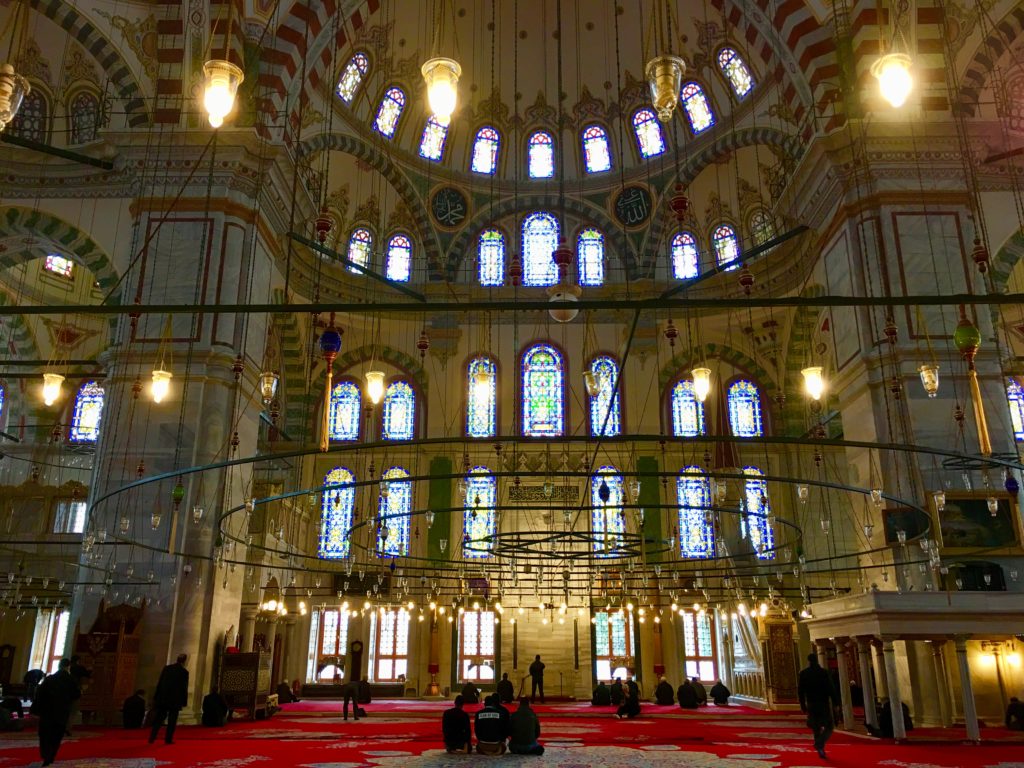
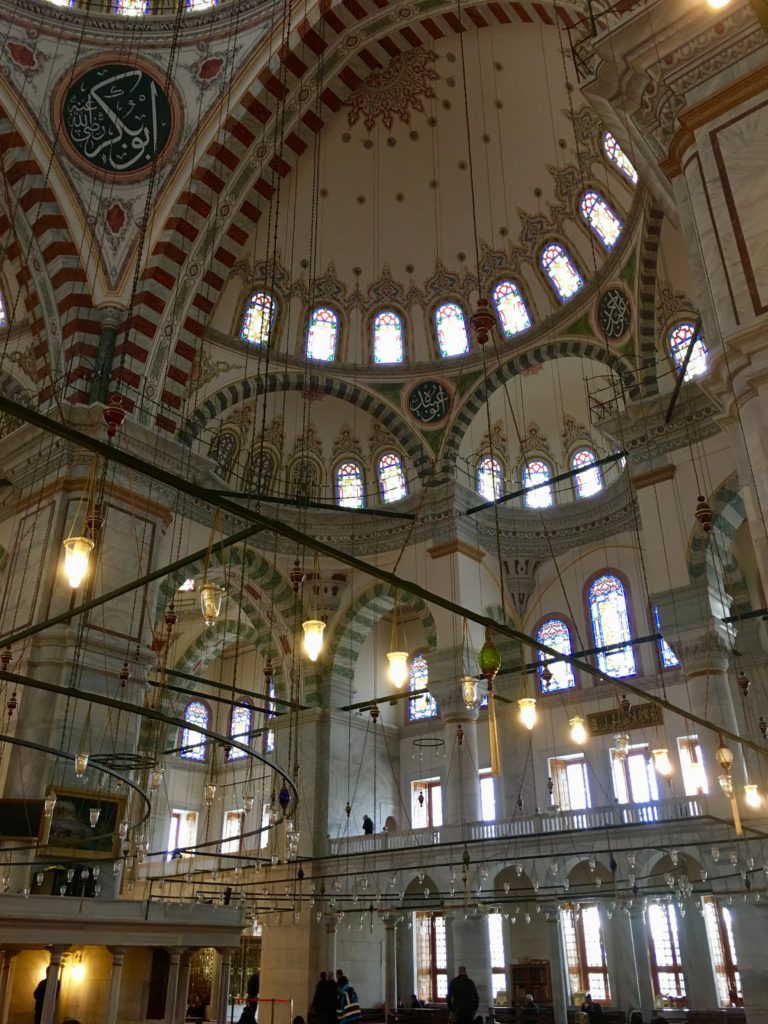
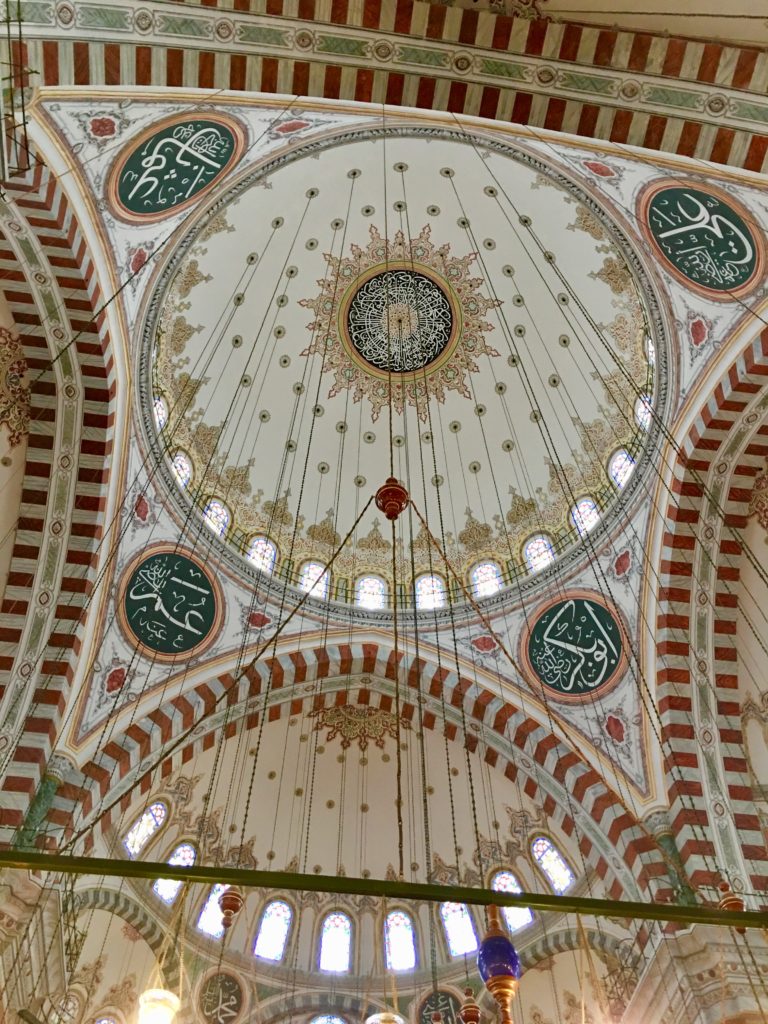
The architect of the complex is thought to be Sinan the Atik (sometimes also called the Elder). Since the word atik means “the freedman”, the implication is that he was of Greek origin. He was most probably a devşirme (a Christian who was converted to Islam). According to the date over the main entrance portal, the complex was built between 1463-1470. What remained of the Church of the Holy Apostles was used as building material. The architect Atik Sinan was executed in 1471. The widespread saying is that the Sultan had his hands cut off first because he could not build a mosque that was as grand as the Hagia Sophia. The dome was 26 metres in diameter whereas, Hagia Sophia’s was 31 metres in the east-west direction and 33 metres in the north-south direction.
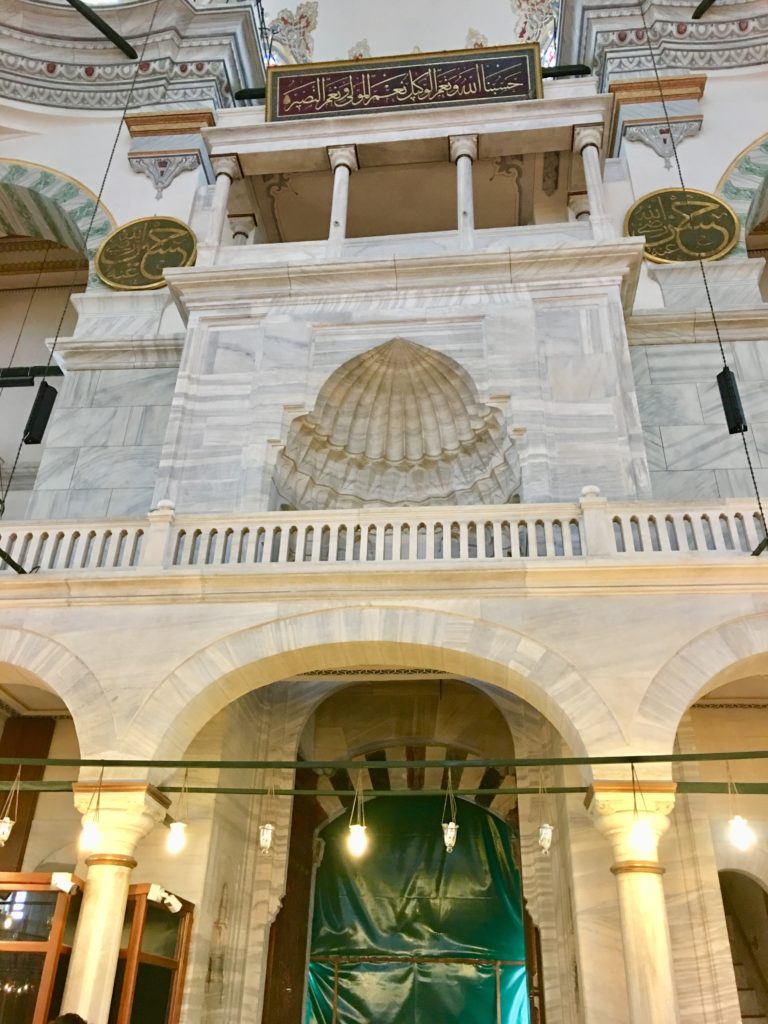
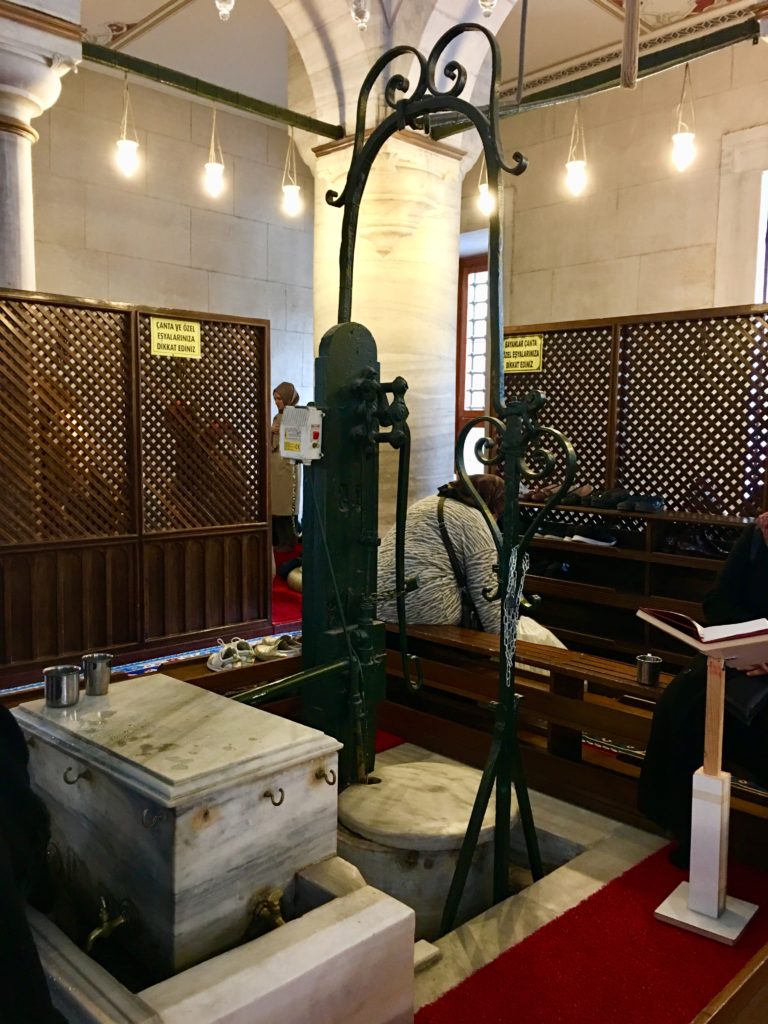
The original Fatih Mosque was severely damaged during the big earthquake in 1766. The Sultan at the time, Mustafa II, had it immediately reconstructed but with a different plan. The reconstruction was completed in 1771. What remains of the original mosque complex today is said to be the courtyard, the main entrance portal, the mihrab, the minarets up to the first şerefe (the balcony like structures on the minarets), the south wall of the graveyard and the adjoining gate. The other buildings of the complex were also damaged during the earthquake, but their reconstruction was more within the lines of their original forms.
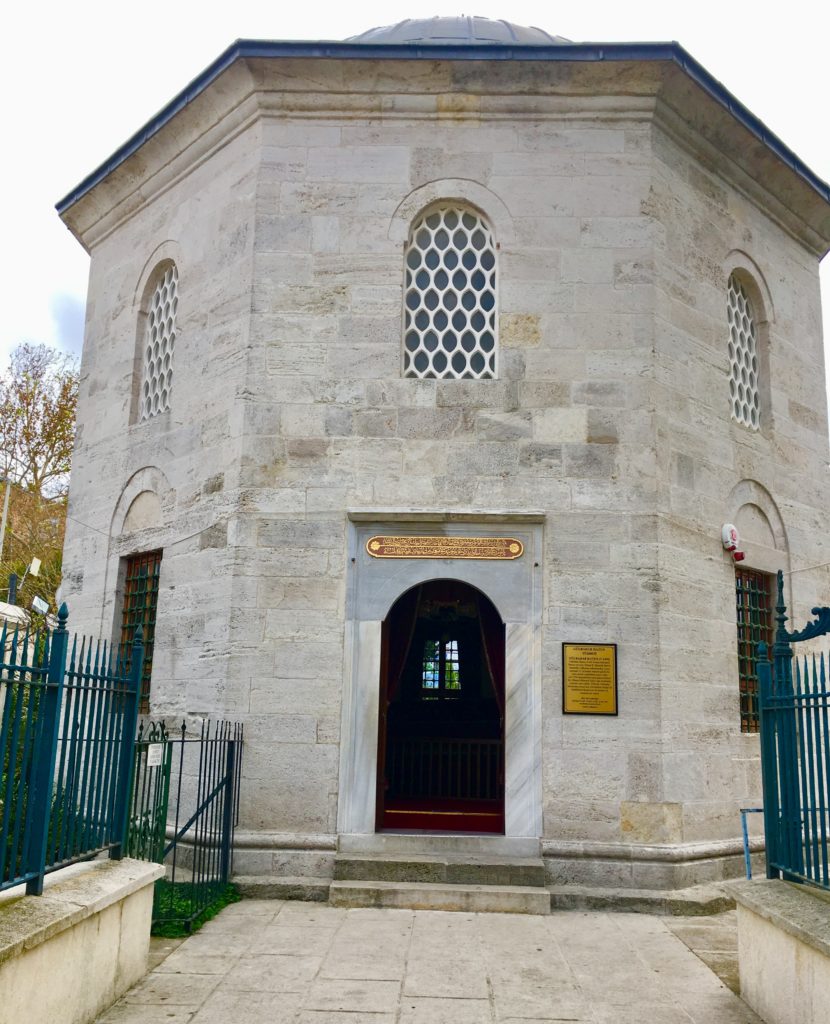
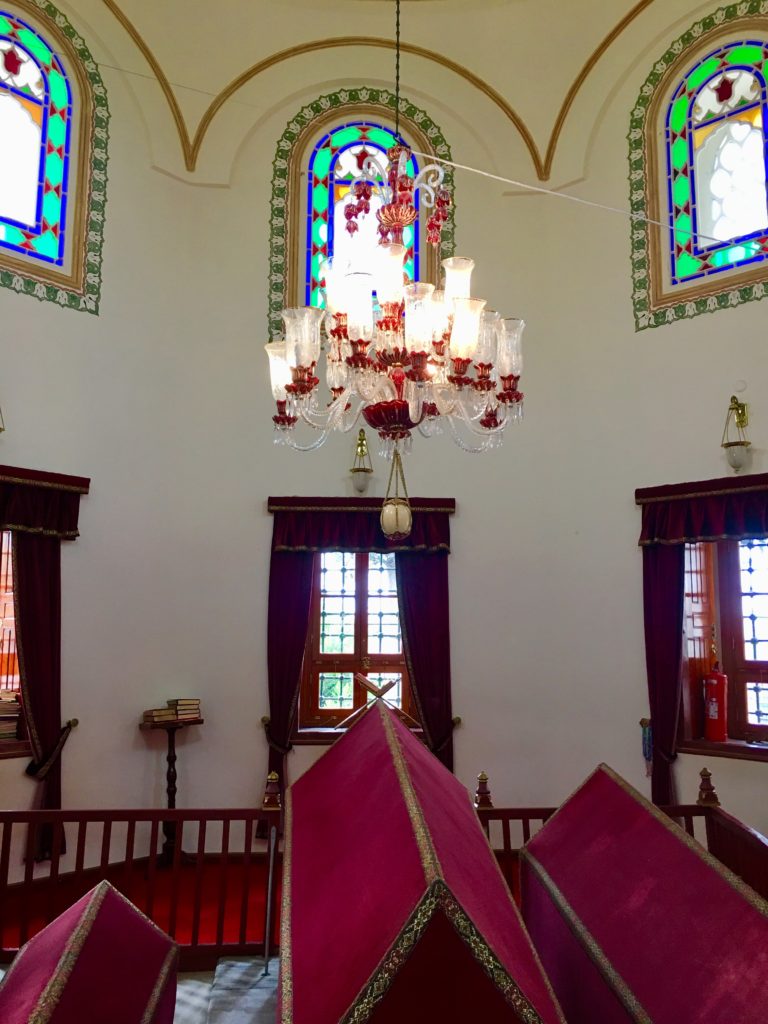
Inside the building, baroque traces of the reconstruction are clearly visible. The minber (pulpit) is no doubt one of them. An interesting feature inside the mosque is the curious drinking water fountain in the right hand corner. This is something very unusual inside a mosque. The fountain has an old-fashioned bronze pump and silver mugs to drink water. People get in line to drink this water that is described as cool and delicious.
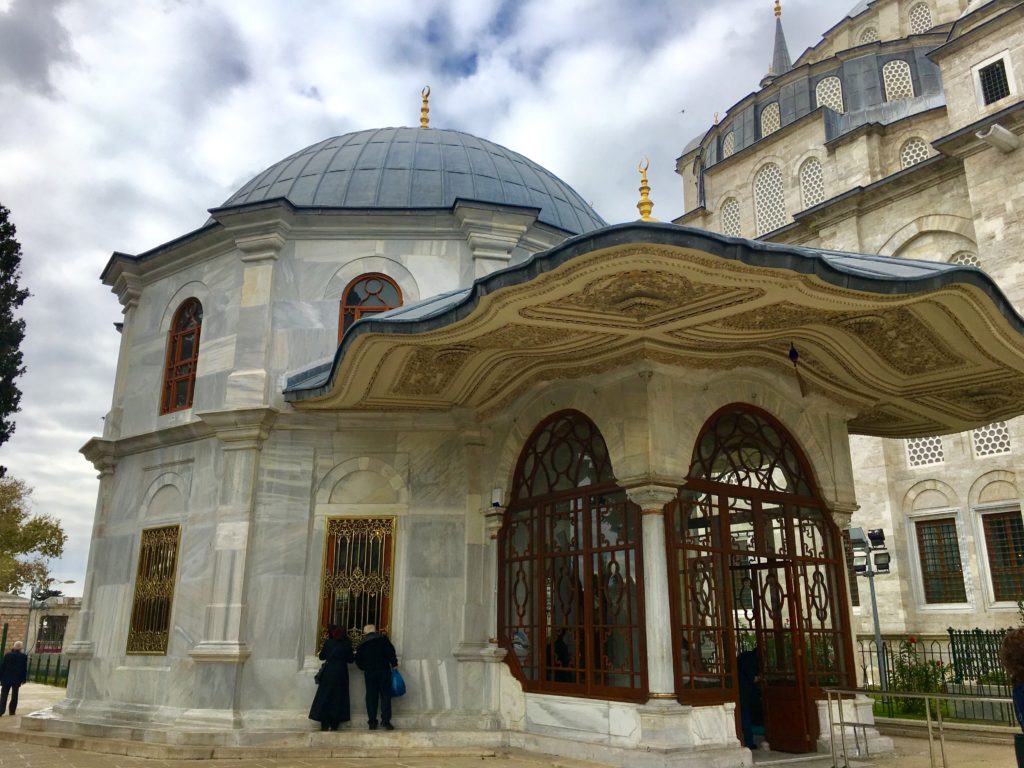
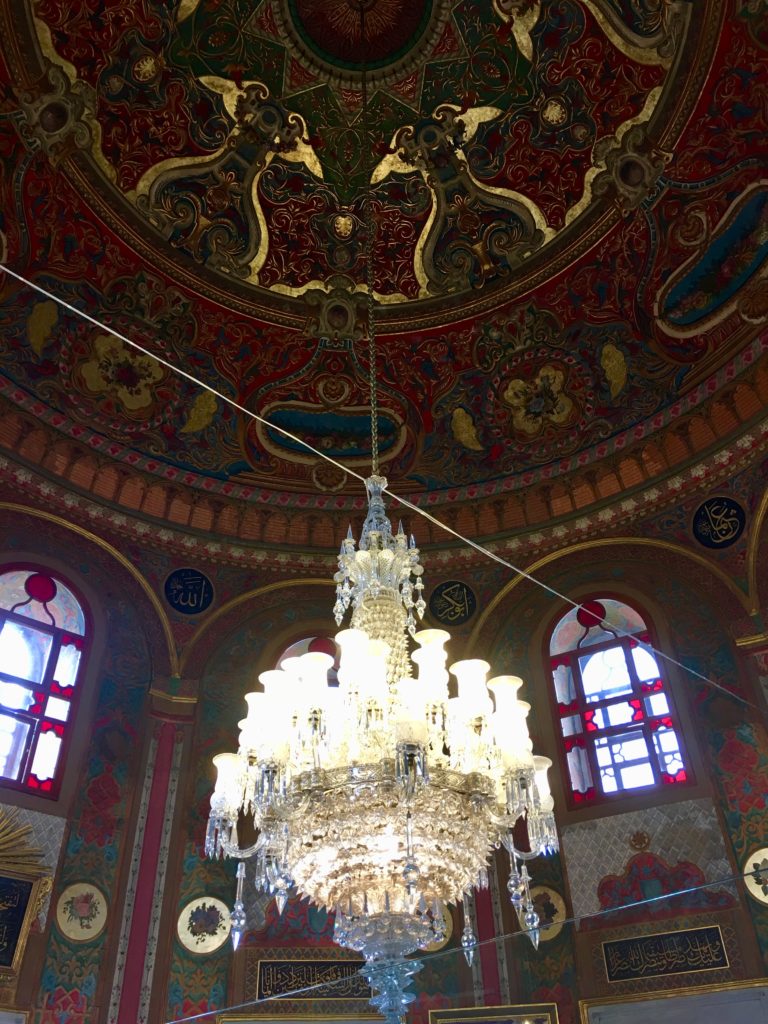
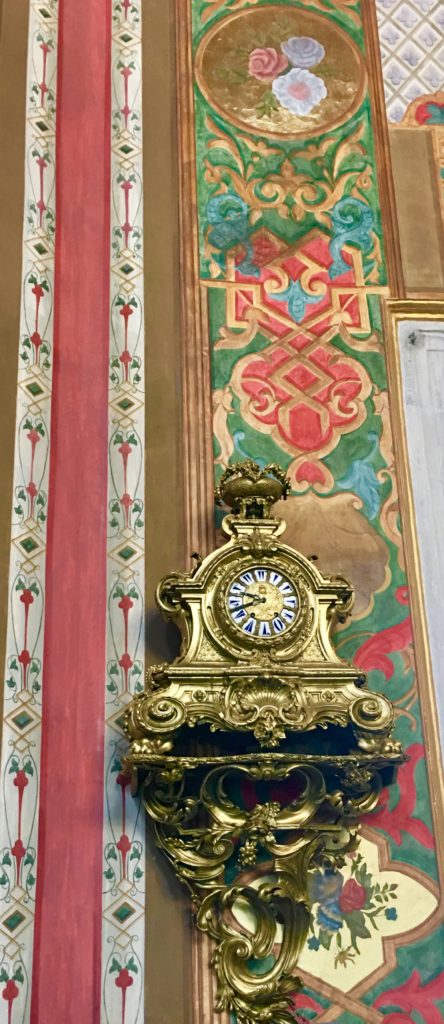
The türbes (mausoleums) of Sultan Mehmet II and that of one of his wives, Gülbahar Sultan, are in the graveyard behind the mosque. Both of them were in ruins after the earthquake and had to be rebuilt. The mausoleum of Gülbahar Sultan is classical, solemn and simple. She was the mother of Sultan Bayazid II and it is said that her son had this mausoleum built for her. According to a legend that has doubtful authenticity, Gülbahar was the daughter of the King of France and she was sent by her father as a bride to the Byzantine Emperor. However, she was captured by the Turks during the siege of Constantinople. Be it as it may, there had been other rumours about her that were supported with evidence by both Turkish and foreign travellers. These implied that, even though she was the wife of the Sultan and the mother of Bayezid II, in reality she never gave up her religion and died as a Christian. It was said that, because of this, the Koran readers who were appointed to chant prayers by her tomb all turned their backs to her while doing so. The windows and doors of her mausoleum were always locked because her ghost deserved not even “a ray of light”.
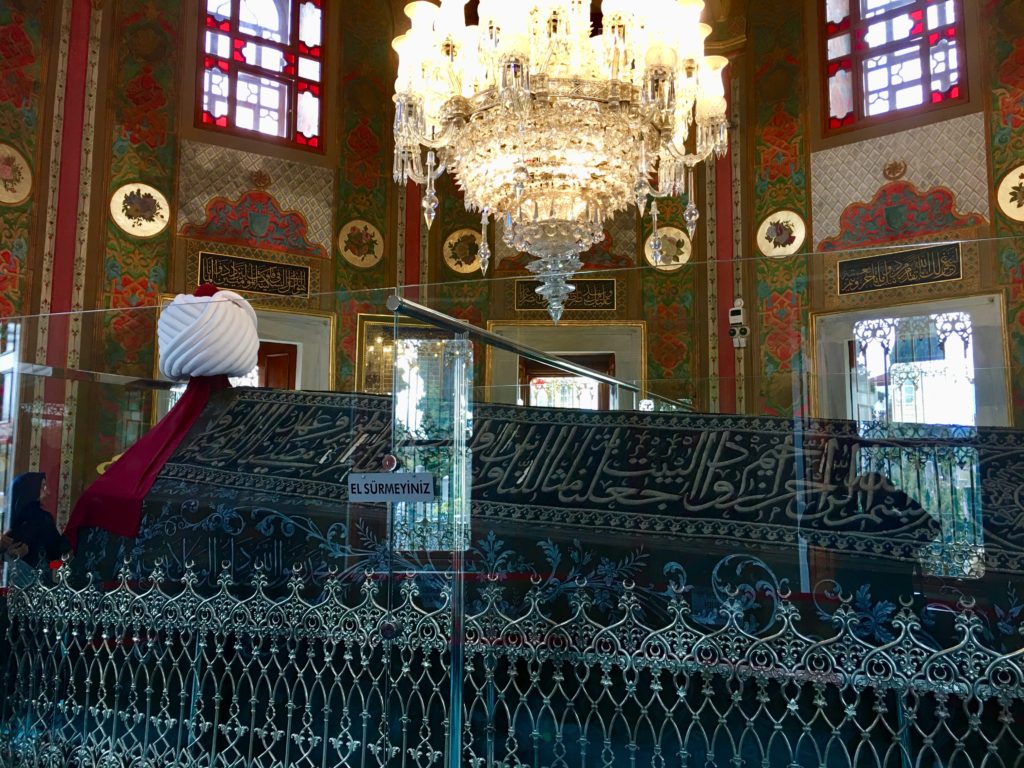
The mausoleum of the Conqueror is very grandiose in the baroque style. It is still the most important Sultan mausoleum in Istanbul where pious people come to pray for the conqueror. In Ottoman times, it became a tradition for new Sultans to visit this mausoleum, as a part of the ceremonies of ascending the throne, in the hope that they would acquire some of the courage and strength of the Conqueror…
